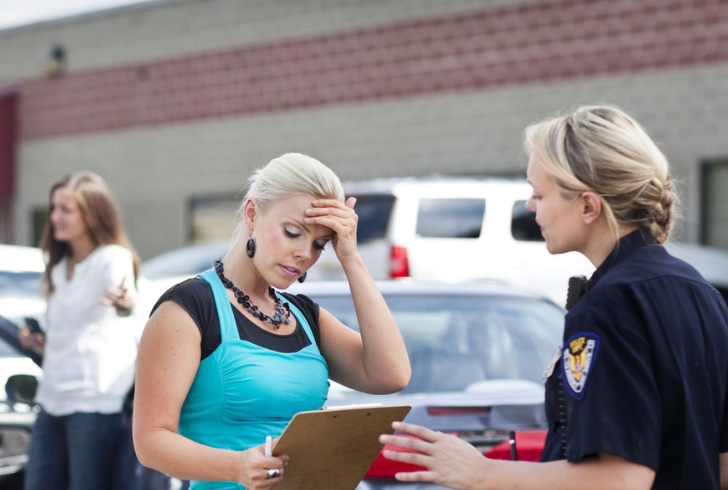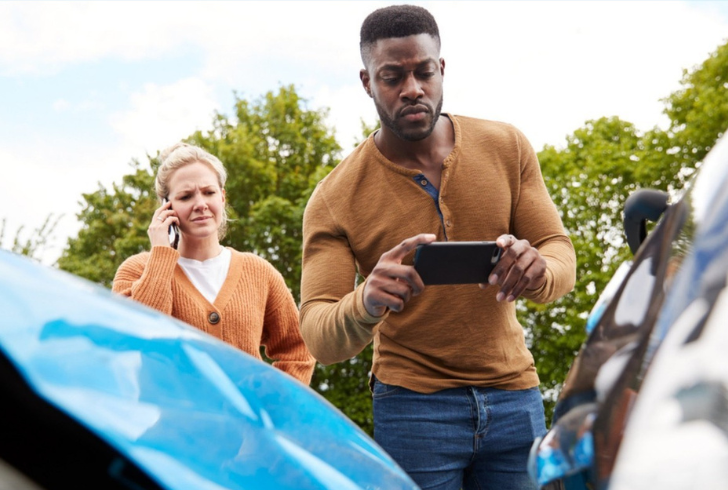When it comes to car accidents, parking lots can be just as unpredictable as busy streets. Parking lot accidents can lead to costly repairs and sometimes even involve injuries despite the slower speeds. Whether it’s a fender bender or a more significant incident, knowing the right steps to take can make a substantial difference in resolving the situation calmly and efficiently.
Here are five practical tips for handling parking lot accidents to ensure you’re prepared and protected.
1. Stay Calm and Remain at the Scene
Emotions can run high in the immediate aftermath of a minor collision. However, it’s important to keep a clear head and avoid leaving the scene, as doing so can lead to legal issues. Instead, take a deep breath and stay put. Reach out to nearby drivers or pedestrians if you need assistance, and wait for any responding officers to arrive.

When law enforcement is involved, their report can be vital to documenting what happened, so be honest and cooperative as they gather details. Once available, obtain a copy of this report for your records and provide it to your insurance company.
2. Check for Any Injuries and Document Damages
Begin by ensuring that everyone involved is safe and uninjured. If there are visible injuries—such as cuts or bruises—call for medical help immediately. If medical attention is required, it’s a good idea to document these injuries with photos as soon as possible.
After addressing any immediate health concerns, examine your car for damage. Take clear photos from multiple angles, capturing not only the visible damage to your vehicle but also the overall scene. These images could be valuable when filing your insurance claim, as they provide concrete evidence of the incident.
3. Exchange Information with the Other Driver(s)
Once everyone’s safety is assured, approach the other driver calmly to exchange contact and insurance information. Gather essential details such as:
1. Full names and contact numbers
2. License plate numbers
3. Driver’s license numbers
4. Insurance providers and policy numbers
This information is often required by state law and can help streamline the insurance claims process. Providing these details to your insurance provider as soon as possible can prevent unnecessary delays in resolving the situation.
4. Collect Additional Details and Speak to Witnesses

To build a comprehensive account of the accident, document details about the surroundings and conditions of the parking lot. Key aspects to note might include lighting, the condition of the lot, or any relevant signage that may have influenced the accident. Take photos of the wider area, capturing any stop signs, right-of-way markers, and the specific spots where each vehicle was parked or backed out.
It can also be incredibly helpful to speak to witnesses who may have seen the accident. Obtain their names and contact information in case their accounts are needed later. In addition, if there is surveillance footage from the parking lot, ask the lot owner if this footage might be available for review. If you or the other driver has a dashcam, check the recordings as they can provide valuable visual evidence.
5. File an Insurance Claim for Damages
After leaving the scene, promptly contact your car insurance provider to initiate a claim for damages. Insurance companies often require specific details to process claims efficiently, so have all your documentation, photos, and witness information on hand. If you’re uninsured or the repair costs are below your deductible, you may consider settling through small claims court as an alternative solution.
While dealing with parking lot accidents can be a hassle, understanding the proper steps to take can help ease the process and ensure your interests are protected. If you’re facing complex damages or injury-related claims, consulting a knowledgeable attorney may be a wise next step to receive further guidance on the best course of action.




